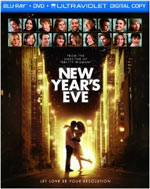
New Year’s Eve

 – for language including some sexual references.
– for language including some sexual references.
Director: Garry Marshall
Starring: Sarah Jessica Parker, Jessica Biel, Ashton Kutcher, Michelle Pfeiffer, Zac Efron, Robert De Niro, Halle Berry, Seth Meyers, Alyssa Milano, Cary Elwes, Hilary Swank, Josh Duhamel, Abigail Breslin, Katherine Heigl, Jon Bon Jovi, Carla Gugino, Sofía Vergara, Matthew Broderick, Lea Michele
Running Time: 1 hour, 57 minutes
Theatrical Release Date: December 9, 2011
Blu-Ray Release Date: May 1, 2012 (Amazon.com)
Official Site
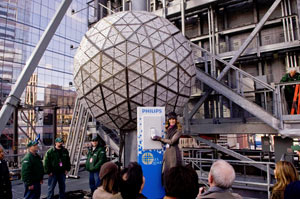
Plot Summary
New Year’s Eve celebrates love, hope, forgiveness, second chances and fresh starts, in the intertwining stories told amidst the pulse and promise of New York City on the most dazzling night of the year. The film’s all-star cast includes Academy Award® winner Halle Berry, Jessica Biel, Jon Bon Jovi, Academy Award® nominee Abigail Breslin, Chris “Ludacris” Bridges, two-time Academy Award® winner Robert De Niro, Josh Duhamel, Zac Efron, Hector Elizondo, Katherine Heigl, Ashton Kutcher, Seth Meyers, Lea Michele, Sarah Jessica Parker, Academy Award® nominee Michelle Pfeiffer, Til Schweiger, two-time Academy Award® winner Hilary Swank and Sofia Vergara.
(from MovieWeb.com)
Film Review
The “chick flick” has been a specialty of director Garry Marshall for decades. From Pretty Woman to Runaway Bride and the ensemble-driven Valentines Day, Marshall has been making romance films for the masses for years. After the success of Valentines Day, the studio greenlit Marshall’s next venture, New Year’s Eve, a sequel of sorts, only in concept, that centers on a batch of couples and singles who often cross paths as they near the grand moment in Times Square as 2011 becomes 2012.
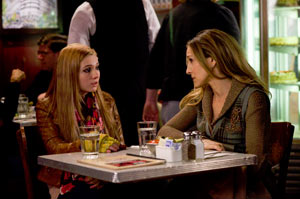
Ensemble films are tricky. On paper, they look like can’t-miss gems, whether it’s a film like Valentines Day or a blockbuster failure like Mars Attacks. The film often becomes less about its subject matter and more about what actor we might see grace the screen next. This becomes one of the many problems inherent with New Year’s Eve. The entire holiday, as well as any relationships that have become the centerpiece for the story, are greatly idealized. Most romantic comedies have that glossy, surreal presentation and New Year’s Eve really isn’t any different. Anyone who’s experienced anything on the popular night will know the glamour of a film like this one isn’t at all like what New Year’s Eve feels like. At the same time, New Year’s Eve works nicely as escapist entertainment. Its idealist view of the holiday is perfect for chick flick lovers to curl up with a box of tissues and a close friend or two to dream about second chances and starting over. One of the film’s biggest themes is forgiveness, and since that’s something many people often struggle with, it’s nice to see it become such a big focus in a Hollywood film like this one.
The multiple intersecting stories shown in New Year’s Eve are probably a few too many for its own good (There are almost as many gratuitous celebrity appearances included here as there are explosions in any one Michael Bay film). Because there are so many substories, there isn’t much character development. What character development is shown here, too, is pretty surface and sometimes stereotypical. And romances blossom all too easily. For example, when a moping Ashton Kutcher suddenly finds himself stuck in an elevator with the pretty, young Lea Michele, it’s not only predictable that they would end up falling for each other, but the way that it happens feels rather forced and unnatural. Another story involves a dying Robert DeNiro, who makes comments about having no family to see him through his final hours because of how horrible of a person he’d been throughout his life. Because the story can only allow so much time to develop each character, we’re given very little to know about this character, and having shots of him lying, ragged, in a dark hospital room intercut with mostly otherwise bubbly scenes is grim and not as well executed as it possibly could have been (to make matters worse — and spoiler alert here — after we see him get to view the ball drop at midnight, it’s highly implied that he somehow immediately died afterwards? It seems bizarre and much too contrived. And then, of course, we’re shown a ward of newborns immediately following that in an attempt bring the film’s mood right back up?). To add some holiday-specific drama into the fold, the New Year’s ball that drops in Time Square in NYC has a malfunction and not only stops working, but won’t fully light up. This is the big dramatic piece to the story, and when you really think about it, it just seems like a silly plot point. Granted, the audience knows a movie about New Year’s Eve can’t end without the ball dropping, so we all know it will get fixed in time, so that in itself relieves any potential, intended tension. To make things more ineffective, we’re never ever given any idea of what time any of these events are happening in relation to the looming midnight festivities. This is one of those films where it may have made sense to include a time stamp periodically throughout the story to inform the audience of where we are in relation to the coming dawn of a new year. The fact that we never really know how little or how much time they have to get that NYE ball fixed, allieviates that needed suspense.
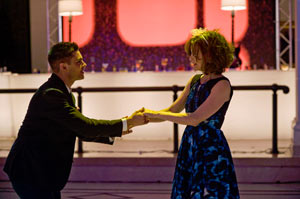
Despite New Year’s Eve being a showcase for caricatures over characters, it’s a fairly harmless rom-com. It’s not super funny, but the talented cast make it bearable and at times enjoyable. While the execution may be poor, New Year’s Eve is the cotton candy of cinema; it’s sweet and fluffy, but there really isn’t any substance. If that’s what you’re looking for, New Year’s Eve delivers. There are far worse films out there, but in the end, this one is still one of the less memorable ones.
The content for New Year’s Eve is mostly mild for a PG-13 film. There isn’t a whole lot of language, and even some of the sexually-related dialog is done in a way where you can tell they were trying to hold back a bit. This also makes the presence of the solitary use of the “F” word all the more glaring. Jessica Biel’s pregnant character shouts the infamous word out of anger (and is meant to be funny, even though it isn’t really) while in labor. There are some uses of innuendo and such that overall keep the film from being a family one, but strangely enough, it otherwise feels like it was trying to be a family film…and just doesn’t get there.
New Year’s Eve is a “chick flick” through and through, but it’s not one of those where people who don’t normally like the genre will like this one. It’s more or less an excuse to have lots and lots of characters played by lots and lots of recognizable faces, which keeps things moderately entertaining, but easily rips the viewer out of any sense of reality. The majority of moviegoers do not experience New Year’s Eve in the way most of these characters do, and it’s unlikely that even the inhabitants of New York City can really relate to the way the holiday is portrayed here. It’s glamour for glamour’s sake, so steer clear unless that’s right up your alley.
– John DiBiase, (reviewed: 4/28/12)
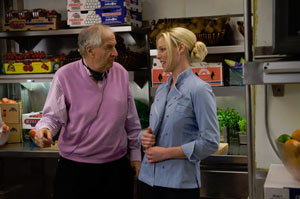
New Year’s Eve is available in a Blu-Ray/DVD/Digital Copy combo pack, single disc DVD, a Blu-Ray/Digital Copy combo pack and thru the usual digital download providers. The Blu-Ray/DVD combo pack features both the Blu-Ray and DVD on ONE disc (also known as a “flipper disc”). One side is DVD and the other is Blu-Ray. In addition to a feature audio commentary from director Garry Marshall is the following bonus content…
The Magic of Times Square (6:12) – This is a short featurette that shows the cast and crew briefly reflecting on New Year’s Eve and, specifically, their thoughts on the iconic imagery of NYE in Times Square.
New Year’s Eve: Secrets of the Stars (5:23) is a short, cute little segment that has the cast and director Garry Marshall reflecting on their favorite New Year’s Eve memories–places they’ve been, things they’ve done–as well as what some of their resolutions are.
Jon Bon Jovi & Lea Michele Rock New Year’s Eve (6:14) is dedicated to the music in the film, particularly the songs Bon Jovi sings. Marshall talks here about pulling Bon Jovi out of acting retirement (I didn’t realize he’d quit the acting biz) to play the role of a musician in the film. We see some great in-studio footage here and hear from Bon Jovi and Lea Michele about the tracks they worked on together.
Deleted Scenes with Introduction by Garry Marshall (16:59) – In this segment, Marshall introduces each deleted scene from the film, giving reasons why some of them were cut. The first has John Stamos appearing as a contest winner who got to throw the switch to light up the New Year’s ball. It’s pretty goofy, but it’s an amusing additional scene here. The second is a horrifically cheesy scene that doesn’t feel even remotely part of the film where Sofía Vergara and Russell Peters are talking after work and Peters’ character lets it slip that he doesn’t actually talk with an Indian accent (like he otherwise does in the film). It was wise to cut this one. Next is a nonsensical scene where Sam is trying to flag down a ride after he crashes his car. In it, an SUV stops, letting out a group of kids who just happen to have snowballs with them in the car, and they throw them at him and drive away. The fourth bit is a short scene where a random person gets a hold of the microphone from a TV reporter in Times Square and starts making announcements when the camera is on her. The next one is a very short scene where a nurse played by Alyssa Milano is shouting at the dying Robert DeNiro because she thinks he’s hard of hearing. The sixth is a super short shot of Marshall’s sister playing a party guest who makes a joke about having a dog named iPod (Sorry Garry, it really wasn’t funny). Following is another split-second gag from the party, and then another that features Amare Stoudemire, from the NY Nicks, making a joke to a guest at the same party. Next is a gag where someone asks Seacrest about American Idol, which was cute but also not necessary. Following that is a short scene where Jensen is flipping pancakes in Laura’s kitchen and has some additional dialog with his road manager. The final “deleted scene” isn’t a deleted scene at all. Marshall went around New York City and asked about what people will be doing for the New Year or what their resolutions will be. Some sound very staged, while others seem rather natural. I’m not sure why he included them with the deleted scenes.
Deleted Scenes (7:48) – These are the above deleted scenes without Garry’s introductions.
Gag Reel (11:04) – After a short intro from Marshall, we see a montage of flubs and mistakes while filming. Some were shown in the credits, but most of these were not. Any profanity used in the goof-ups were dubbed out with a silly horn sound, so that was an appreciated touch.
– John DiBiase, (reviewed: 4/28/12)
Parental Guide: Content Summary
![]() Sex/Nudity: G.G. says about her husband, “the man had five kids, he must have loved something!”; Randy, while flirting with Olivia, makes a comment that they should have a bunch of babies; We see Randy teaching Walter piano and they’re both singing “I’m in love with a stripper” which includes a line about her working the pole; Randy moves in to kiss Olivia, but she leaves. As she does, she says to him “Don’t look at my butt, I’m a good girl,” and we see her swinging her hips as she walks away. When he looks, she jokingly turns around and tells him to stop; Hsu says to Earla that he hasn’t been with someone in three years. She says “four” and they look at each other and start making out, rubbing their hands all over each other (clothed). In the next scene, Earla brings him breakfast in bed (meaning they slept together), but it turns out he died. The next scene is the funeral and she’s weeping a lot, which causes the pastor to console her that she should cherish the time they had together. She then says that she’s not weeping for him, but that she’ll forever be known for this, and adds “Tap it and die.” The pastor replies “I hear that.”; Randy takes Olivia to a club where there’s lots of club dancing (some sensual) and he encourages her to let loose. He comments that he knows she practices dancing alone in her room with a mirror and a stuffed animal and mimics the motion while making grunting sounds; Randy encourages Walter who is down about his Aspberger’s Syndrome and after saying some really nice things, Walter tells Randy that part of his condition makes it difficult to tell when people are coming on to him. Randy shoves him out of the way and apologizes; Randy is shirtless as G.G. tends to a cut on his cheek. He kisses Olivia after G.G. leaves and it turns into a passionate kiss. He then stands up and embraces her and G.G. walks in and pulls them apart saying, “This is not going to turn into THAT in my house!”
Sex/Nudity: G.G. says about her husband, “the man had five kids, he must have loved something!”; Randy, while flirting with Olivia, makes a comment that they should have a bunch of babies; We see Randy teaching Walter piano and they’re both singing “I’m in love with a stripper” which includes a line about her working the pole; Randy moves in to kiss Olivia, but she leaves. As she does, she says to him “Don’t look at my butt, I’m a good girl,” and we see her swinging her hips as she walks away. When he looks, she jokingly turns around and tells him to stop; Hsu says to Earla that he hasn’t been with someone in three years. She says “four” and they look at each other and start making out, rubbing their hands all over each other (clothed). In the next scene, Earla brings him breakfast in bed (meaning they slept together), but it turns out he died. The next scene is the funeral and she’s weeping a lot, which causes the pastor to console her that she should cherish the time they had together. She then says that she’s not weeping for him, but that she’ll forever be known for this, and adds “Tap it and die.” The pastor replies “I hear that.”; Randy takes Olivia to a club where there’s lots of club dancing (some sensual) and he encourages her to let loose. He comments that he knows she practices dancing alone in her room with a mirror and a stuffed animal and mimics the motion while making grunting sounds; Randy encourages Walter who is down about his Aspberger’s Syndrome and after saying some really nice things, Walter tells Randy that part of his condition makes it difficult to tell when people are coming on to him. Randy shoves him out of the way and apologizes; Randy is shirtless as G.G. tends to a cut on his cheek. He kisses Olivia after G.G. leaves and it turns into a passionate kiss. He then stands up and embraces her and G.G. walks in and pulls them apart saying, “This is not going to turn into THAT in my house!”
![]() Vulgarity/Language: 1 “F” word (1 is silenced during the credits), 1 “S” word,” 1 incomplete “Holy Sh–,” 1 incomplete “Shi-,” 1 “cr*ppy” (written), 1 “d*mn,” 1 “p*ssed off,” 4 “a” words,” 4 “h*ll,” 2 “Oh my G-d,” 1 “b*tch”
Vulgarity/Language: 1 “F” word (1 is silenced during the credits), 1 “S” word,” 1 incomplete “Holy Sh–,” 1 incomplete “Shi-,” 1 “cr*ppy” (written), 1 “d*mn,” 1 “p*ssed off,” 4 “a” words,” 4 “h*ll,” 2 “Oh my G-d,” 1 “b*tch”
![]() Alcohol/Drugs: There’s talk about drinking and we see people with bottles of champagne and such, but it’s not a major focus in the film.
Alcohol/Drugs: There’s talk about drinking and we see people with bottles of champagne and such, but it’s not a major focus in the film.
![]() Blood/Gore: None.
Blood/Gore: None.
![]() Violence: A car knocks a woman off her feet into trash on the side of the street; We see Randy angrily ripping down tinsel and decorations around his apartment; Laura slaps Jensen in the face; A GPS misdirects a driver, causing him to hit a sign and the airbags to deploy in his face; Laura slaps Jensen in the face again.
Violence: A car knocks a woman off her feet into trash on the side of the street; We see Randy angrily ripping down tinsel and decorations around his apartment; Laura slaps Jensen in the face; A GPS misdirects a driver, causing him to hit a sign and the airbags to deploy in his face; Laura slaps Jensen in the face again.
